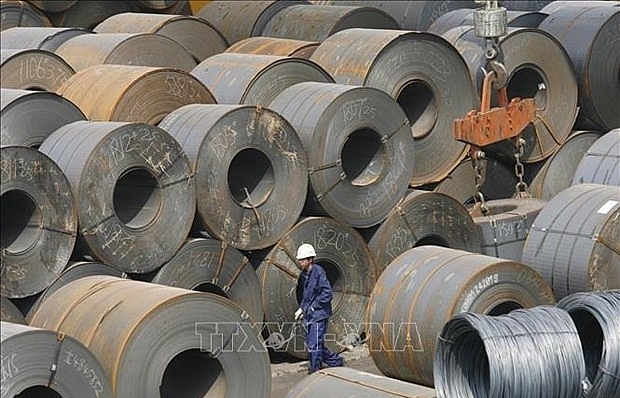First-half Customs revenue jumps 12% after dispiriting 2021
First-half Customs revenue jumps 12% after dispiriting 2021
An overall easing in the Covid-19 situation and recovery in global economic momentum paved the way for Customs revenue collection to reach nearly $1.3 billion in the first half of 2022, rising by almost one-eight from the corresponding period last year, according to data from the General Department of Customs and Excise of Cambodia (GDCE).
The GDCE collected 5.2595 trillion riel, or about $1.2954 billion, up by 12 per cent year-on-year, equivalent to 50.2 per cent of the full-year target set by the 2022 Law on Financial Management of around $2.58 billion, the department indicated in a statement issued in conjunction with its first-half review meeting on August 3.
Broken down by revenue types, value-added tax (VAT) on petroleum products amounted to 0.1894 trillion riel, other VAT sources 1.996 trillion riel, special tax 1.9777 trillion riel, customs duty 0.9898 trillion, and export tax and other fees (0.3216 trillion riel).
Categorised by products, vehicles and machinery accounted for the most, at 2.3715 trillion riel, followed by assorted merchandise (1.4561 trillion), petrochemical products (1.1103 trillion), and construction materials and other fees (0.3216 trillion), according to the GDCE, which is under the Ministry of Economy and Finance.
Seeking to increase efficiency in the GDCE’s revenue collection efforts, finance minister Aun Pornmoniroth – presiding over the August 3 meeting – underscored the need to prevent and crack down on tax evasion and fraud; step up cooperation with relevant ministries and institutions on anti-money laundering efforts; strengthen supervision of e-commerce transportation matters; and improve general work efficiency, according to the statement.
Speaking to The Post on August 4, Hong Vanak, an economic researcher at the Royal Academy of Cambodia, stressed that customs duty and other taxes enable the government to strengthen human resource development, build roads and infrastructure, maintain and upgrade public service facilities, pay civil servants, and develop the country in myriad ways.
The increase in Customs revenue indicates an increase in imports and exports, and “demonstrates the efficiency of tax revenue collection and national economic growth”, he said, predicting more “positive signs” going forward.
Vanak explained that a considerable chunk of GDCE’s revenue for the January-June period came from owners of right-hand drive vehicles that had been brought into the Kingdom without paying import duties or other charges.
Earlier this week, GDCE deputy director-general Pha Engveng said that, before 2019, customs revenue had grown at an annual rate of between 10 per cent and more than 27 per cent.
He commented that 2019 brought in an all-time record growth rate. According to a ministry statement, the GDCE’s revenues grew 30 per cent that year to about $3.215 billion, topping 13 trillion riel.
As the GDCE’s revenues are mainly tied to international trade activities, collection will be congruent with global economic trends, he explained.
“Cambodia has entered into FTAs [free trade agreements] under ASEAN and ASEAN Plus. And, just in the first half of this year, we’ve taken into account that the quantum of duty-free imports from ASEAN countries is close to $200 million,” Engveng said.
However, without providing a concrete timeframe for reference, he added that the GDCE has lost “more than $500 million” in revenue owing to the duty-free import of raw materials and equipment used in the production of domestic substitute products.
Last year, the GDCE collected 9.2957 trillion riel, or $2.2952 billion, equivalent to 97.1 per cent of the annual target set by the Law on Financial Management for 2021. This represented a 5.1 per cent drop compared to the sum collected in 2020.














